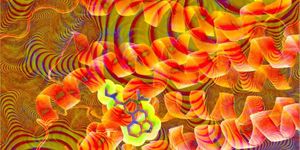Genetically Engineered Cells Cure Infants of Cancer
Several years after receiving the treatment, scientists have confirmed that two infants with cancer that received a type of gene therapy are cured. The babies had leukemia that was not responding to chemotherapy. The prognosis for the infants was not good, so doctors tried this experimental therapy using engineered T-cells provided by a donor; two years later the cancer is still in remission, a major step forward for this kind of treatment.
"This application of an emerging technology has provided a demonstration of the potential of gene-editing strategies for engineered cell therapies, albeit with a clinical experience limited to two infants," wrote the team from London’s Great Ormond Street Hospital, who published their findings in Science Translational Medicine. The video above summarizes the work.
There are currently two approaches that use genetically engineered T-cells, a type of immune cell that attacks dangerous cells, to combat cancer. One methodology harvests the cells from a patient, they are then modified to improve their efficacy as cancer fighting agents, and they are then returned to the patient. Unsurprisingly, this tailored approach is expensive and logistically demanding; sometimes the patient doesn’t have enough cells to give
The other idea is to use a one-size-fits-all strategy with the anti-cancer cell. “The patient could be treated immediately, as opposed to taking cells from a patient and manufacturing them,” explained Julianne Smith, vice president of CAR-T development for Cellectis, a company working to supply such universally applicable cells.
This approach utilizes genetically modified T-cells, called chimeric antigen receptor (CAR-) T-cells provided by healthy donors. Four different changes were introduced, two through a technique known as TALEN, that made the cells seek and destroy cancer.
When this treatment was first tried back in 2015, researchers knew it would take time before they could declare it a success. "We're in a wonderful place compared to where we were five months ago, but that doesn't mean cure," one study group member, Paul Veys of University College London commented to the BBC in 2015. "The only way we will find out if this is a cure is by waiting that one or two years, but even having got this far from where we were is a major, major step."
Happily, the infants are still cancer free.
There are risks with this type of treatment; one side effect is called cytokine-release syndrome, which results in a drop in blood pressure and severe fever. Another trial involving adults was brought to a rapid halt after several patients died from brain swelling. The promise of a therapy that could be a cancer cure instead of a treatment will continue to interest patients and researchers, and hopefully we’ll see more progress.
Sources: MIT Technology Review, UPI, Futurism.org, ScienceAlert, Science Translational Medicine








